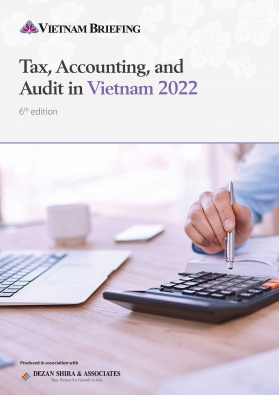Seven Years On: 4 Ways the Vietnam-Korea FTA is Changing Vietnam
The Vietnam-Korea Free Trade Agreement (VKFTA) turned seven in May of this year. Since it came into force in 2015 it has changed the face of trade between South Korea and Vietnam. Here are just a few of the sectors benefiting from this agreement and the businesses capitalizing on the opportunities it has presented.
In early October, LS Electric, a leading Korean electric company in Vietnam, announced it would be ramping up its production capacity with a new factory in Bac Ninh. It expects this new investment to generate up to US$45 million a year.
Meanwhile, Samsung also intends to invest another US$3.3 billion in Vietnam with plans to mass-produce semiconductor parts in Thai Nguyen Province, in northern Vietnam.
These major investments have been, at least it part, fueled by the Vietnam-Korea Free Trade Agreement (VKFTA) that was signed in 2015.
Now, in its seventh year, the VKFTA has generated a slew of opportunities for Korean investors in Vietnam through preferential tariffs and reduced redtape.
Consumer electronics manufacturing
Under the VKFTA, Vietnam removed 31 tariff lines imposed on Korean electronic products and components. When these tariffs were removed importing parts for electronic devices, like mobile phones, from Korea became cheaper.
As a result, Korean electronics firms were able to diversify parts of their supply chains into the Southeast Asian nation without having to worry about increased input costs.
Samsung, for example, has been slowly expanding its footprint in Vietnam for years with great success. In 2021, despite the COVID-19 pandemic, Samsung Vietnam still managed to export US$65.5 billion worth of electronics, up 15.8 percent compared to 2020.
Green energy
The VKFTA has also eased Vietnam’s investment requirements from Korea opening up a number of sectors to greater foreign direct investment. This includes Vietnam’s energy sector where a number of Korean firms have been working to build Vietnam’s green energy infrastructure.
In January, SK Ecoplant, an affiliate of SK group – the third-largest conglomerate in South Korea, officially partnered with Vietnamese energy firm, Nami Solar, in a US$200 million solar energy joint venture. The project is set to generate up to 250 MWp of rooftop solar power to serve the demands of domestic businesses.
In July of this year, SK Group also announced their plan to develop a hydrogen power plant and hydrogen power supply chain in Can Tho Province.
Food production
South Korea’s and Vietnam’s food industries have both benefited greatly from the VKFTA. Under the agreement, both Vietnam and Korea eliminated tariffs on a number of food products immediately after the agreement came into force. They agreed to eliminate tariffs on most other food products over the following 10 to 15 years.
Vietnam’s shrimp and lobster, for example enjoys tariff-free entry into South Korea, with a quota of 15,000 tonnes per year.
Currently, CJ Group, South Korea’s largest conglomerate in food and entertainment, is developing shrimp farms in Vietnam to produce seafood to export to South Korea to take advantage of the increased quota of tariff-free shrimp imports.
CJ Group has also made several key investments in the Vietnamese food industry. It purchased 65 percent shares of Minh Dat Food Co., Ltd and a 47.33 percent share of Cau Tre Export Goods Processing JSC – two key Vietnamese food producers.
Carmakers and automobiles
Vietnam cut tariffs for automobile parts and trucks or cars of over 3000cc, from South Korea, under the VKFTA.
This has put Korean automobile manufacturers in Vietnam at an advantage: they can import parts/components from their home country at a reduced cost, then assemble and distribute the finished products in Vietnam more competitively.
As the demand for automobiles escalates in Vietnam due to rising disposable incomes, investing in the country’s car market could be very lucrative.
Hyundai, a prominent car manufacturer in South Korea, was among the first to invest in Vietnam’s automobile market.
In 2017, Hyundai joined a joint venture with Vietnam’s Thanh Cong Group to assemble and distribute Hyundai cars in Vietnam, introducing their subsidiary Hyundai Thanh Cong JSC. By 2018, Hyundai Thanh Cong already had a large-scale assembly plant in Ninh Binh, with a capacity of 60,000 units annually. Construction of a second plant is due for completion this November. The two plants are projected to have a total capacity of up to 170,000 units a year.
Vietnam – South Korea ongoing trade relations
This year marks 30 years of diplomatic relations between Vietnam and South Korea. The two countries have long been trusted partners in many aspects including trade and politics, aiming for a bilateral turnover of US$150 billion by 2030.
South Korea is currently one of the biggest contributors to Vietnam’s FDI inflows, having invested US$80.5 billion in 9,400 projects to September 2022.
About Us
Vietnam Briefing is published by Asia Briefing, a subsidiary of Dezan Shira & Associates. We produce material for foreign investors throughout Eurasia, including ASEAN, China, India, Indonesia, Russia & the Silk Road. For editorial matters please contact us here and for a complimentary subscription to our products, please click here.
Dezan Shira & Associates provide business intelligence, due diligence, legal, tax and advisory services throughout the Vietnam and the Asian region. We maintain offices in Hanoi and Ho Chi Minh City, as well as throughout China, South-East Asia, India, and Russia. For assistance with investments into Vietnam please contact us at vietnam@dezshira.com or visit us at www.dezshira.com
- Previous Article Eurocham Business Climate Index Down 6.4 Points: Q3 2022
- Next Article Vietnam’s Luxury Car Market Heats Up with McLaren Joining the Fray










